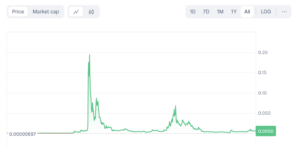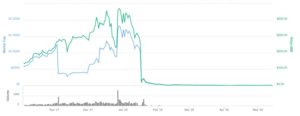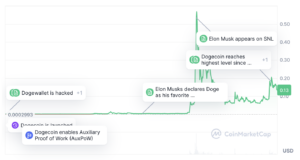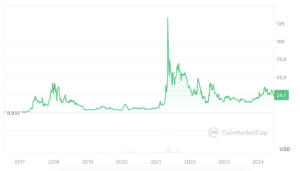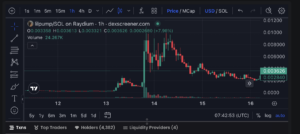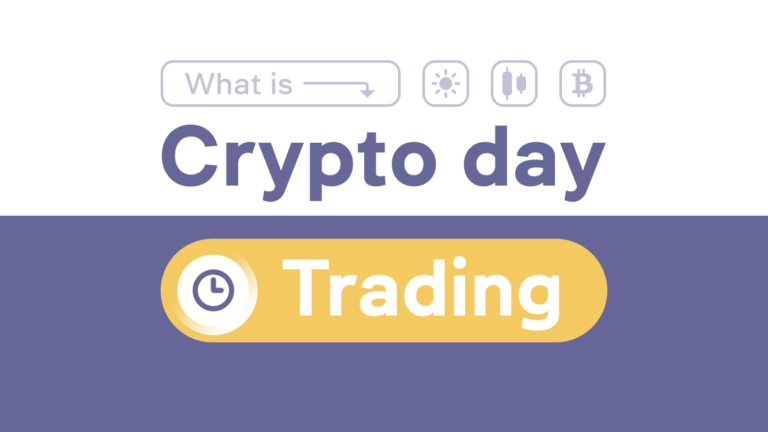What is Pump and Dump in Cryptocurrency?
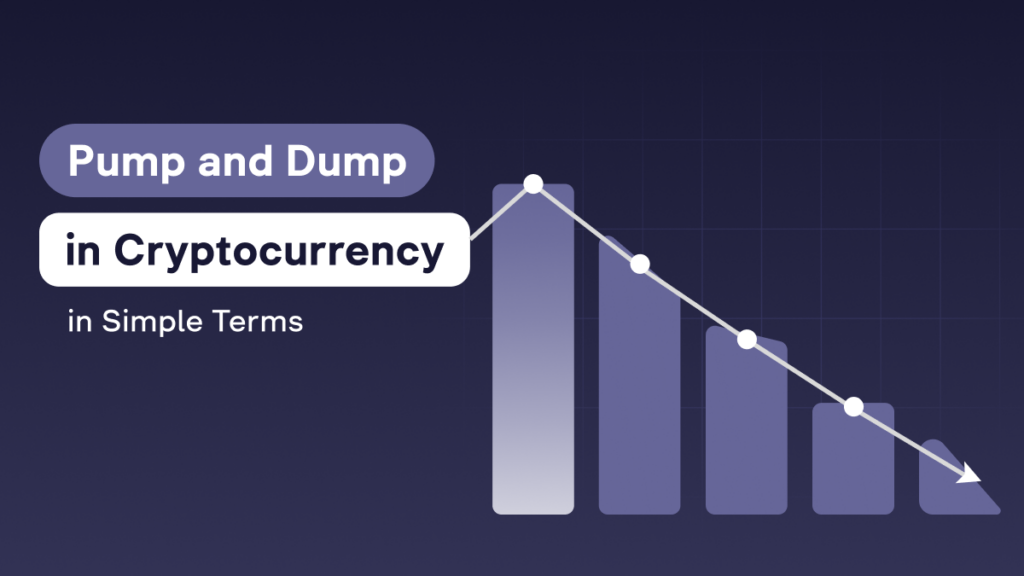
Content
In recent months, the cryptocurrency market has experienced a surge in the popularity of meme coins, overtaking even the most advanced technological projects in terms of interest. Many of these tokens are created for one purpose only — to make money from investors. In this article, we will look at definition of pump and dump crypto, how to identify crypto pump and dump, and how not to cryptocurrency pump.
How Do Crypto Pump and Dump Work?
Crypto pump is a scheme to artificially inflate the price of an asset and then sell it at the maximum price. The scheme originated in the stock market, and one of the most famous examples of its use was the brokerage house Stratton Oakmont under the leadership of Jordan Belfort, the famous Wolf of Wall Street. The brokerage house actively attracted investors by deceiving them about the value of shares and made huge profits due to the sharp rise and subsequent fall in prices.
A similar scheme is used in the cryptocurrency market. Instead of making calls and directly selling shares, scammers create marketing campaigns, connect influencers, and use social networks to mass distribute information to create a stir around the chosen cryptocurrency. This attracts many inexperienced investors who, succumbing to pressure and greed, actively buy tokens, thereby increasing their value. Then, the scheme organizers sell their tokens at inflated prices, leading to a sharp exchange rate collapse.
It means crypto pump dump can be categorized into three phases:
- Preparation. Fraudsters create or choose a little-known token and gradually buy it to avoid attracting unnecessary attention and not scare off potential investors. Next, marketing enters the fray: fraudsters invent a legend, spread signals to buy in chat rooms and connect influencers who advertise the project.
- Crypto Pumping. Fraudsters themselves pour significant sums into the token, creating the appearance of growth. They are joined by gullible investors who believe in the soon increase in value. The price does increase dramatically, sometimes by 100% and even 1000%.
- Crypto Dump. Fraudsters sell their tokens. Deceived investors can only fix losses to save at least part of the funds or hope for a possible rise in the rate in the future, which will most likely never happen.
Cryptocurrency exchanges actively apply AML (Anti-Money Laundering) procedures to prevent dumping and dumping schemes to combat money laundering and identify suspicious financial transactions.
Pump and Dump Features
So, we’ve already figured out what a pump and dump is; what’s left is understanding how to define it. Pumping cryptocurrency always occur due to the prior collusion of large investors (whales). Usually, such a scheme is used on tokens with low market capitalization, as even relatively small cash injections can significantly affect their rate. For example, Bitcoin pump and dump is hard to imagine because of its market weight, but small cryptocurrencies often attract scammers with their dumping ability. In addition, tracking down information about little-known altcoins is more complex than popular projects.
The lack of official information is an important sign. If news about a project comes from “secret chats” and is not backed up by official statements, it should raise suspicions. Positive news, such as the launch of a new product or software update, usually increases the coin’s rate, but an unjustified increase in the rate without confirmation from official sources is almost always a reason to be wary.
Another sign of a pampa is a sharp increase in trading volume without obvious reasons and accompanying rate growth. Significant project events are always specified in the White Paper and Roadmap, which describe the project’s goals, objectives, and timeline.
Pump and Dump Forms
Pump and dump variations include several schemes, each with its own characteristics and methods of implementation:
- Classic Pump&Dump: In this scheme, attackers first select a little-known or new asset with low crypto liquidity. Then the “dump” stage begins — this is the collusion of fraudsters and the beginning of active buying of the asset, creating the appearance of growth. An aggressive marketing campaign is launched to attract as many investors as possible. After that, a “dump” takes place, which is the sale of assets at inflated prices, resulting in a sharp collapse of the price. Investors who bought at the peak are left with losses.
- Coordinated dump and dump: This type of scheme involves numerous people who agree in advance on when and how to buy and sell an asset. Such actions are often organized through closed groups in social networks or messengers. Participants act synchronously, which allows to a significant increase in the effect of the pampa. As a result, the asset price rises sharply and falls rapidly when participants start selling their shares en masse.
- Micro Pump and Dump: Micro pumps and dumps occur on lesser-known exchanges with assets with very low liquidity and capitalization. In such cases, even small amounts of money can cause significant price movement. This makes cryptocurrency micro-pump and dump accessible even to small groups of traders or individuals. It is important to note that such schemes are less visible and often overlooked by regulators.
- Retail Pump and Dump: In this scheme, attackers target retail investors by using social media, forums, and other platforms to spread rumors and fake news about an asset’s impending rise. These rumors are often backed by fake analyst reports or fake recommendations from “experts.” Retail investors, believing in the asset’s prospects, start buying it en masse, leading to a short-term price rise. The organizers of the scheme then sell their assets, causing the exchange rate to collapse.
- ICO dump and dump on the exchange: This variation is related to initial token offerings (ICO). Attackers create new projects with attractive ideas and promises of high returns by conducting ICOs to raise funds. After successfully completing the ICO and attracting enough investors, they artificially inflate the price of the token. Then, when the price peaks, the organizers start selling their tokens, leaving investors with depreciated assets.
Pump and Dump Examples
- Verge (XVG): In April 2018, Verge fell victim to a pump-and-dump scheme. After announcing a supposed partnership that was supposed to increase the coin’s value significantly, Verge’s price skyrocketed. Ultimately, it turned out that the partnership was exaggerated and needed to live up to expectations. The price of Verge soon collapsed, leaving investors at a loss.
Source: https://coinmarketcap.com/currencies/verge/
- BitConnect (BCC): BitConnect was one of the most infamous dump-and-dump schemes. The platform promised high returns on investments in its BCC token. In early 2018, when the token’s price peaked, the founders started selling off their assets. Soon, BitConnect was accused of fraud and shut down, leading to a complete collapse of the token price and huge losses for investors.
Source: https://digitalcoinprice.com/coins/bitconnect
- Dogecoin (DOGE): In 2021, Dogecoin was repeatedly pummeled and dumped. Thanks to celebrity endorsements such as Elon Musk and an active social media campaign, Dogecoin’s price jumped sharply. However, each significant rise was followed by a crash as organizers and early investors sold their tokens at inflated prices, leaving new investors with devalued assets.
Source: https://coinmarketcap.com/currencies/dogecoin/
- Ethereum Classic (ETC): In 2017, Ethereum Classic experienced a series of pampers and dumps. A group of traders actively promoted the coin on forums and social media, creating artificial excitement around it. The price of ETC rose rapidly at first, but after reaching a peak, it fell sharply when traders started selling their assets en masse.
Source: https://coinmarketcap.com/currencies/ethereum-classic/
- P&D schemes on small exchanges: Numerous instances of pumping and dumping occur on lesser-known and regulated exchanges. For example, exchanges with low liquidity often see sudden spikes in the price of low-capitalization altcoins. Such coins are artificially inflated by organizers, who then quickly sell off their assets, causing the price to collapse and leaving ordinary investors with devalued tokens.
A market maker’s algorithm can influence the dynamics of an asset’s price, but it cannot completely prevent market manipulation, such as pump-and-dump schemes that take advantage of sharp fluctuations in supply and demand.
How to Earn on Pamp and Dump?
Manipulating the market is unethical and hurts other investors, but being an outsider and making money without being directly involved in the pampa is possible.
How to Spot a Crypto Pump and Dump Scheme?
It is enough to be attentive and enterprising. The basic pump and dump strategy is to analyze the market. Traders find a little-known coin with low liquidity and small capitalization. For example, a token with the name of a famous musician has been noticed on the market, but whether the musician himself is related to it or not has yet to be discovered. What is usually done? Fans of trading on such news, as a rule, subscribe to the artist’s social networks and follow his publications.
This is exactly what happened with the LILPUMP asset. The American rapper known under the pseudonym Lil Pump actively promoted the token in his social networks and even got a tattoo on his forehead with the inscription “Solana”. After that, LILPUMP began to grow rapidly. Those subscribed to the rapper managed to buy LILPUMP at an early stage and fix the profit at the maximum could earn, 1115% profit.
Source: https://moontok.io/coins/lil-pump-2
There is also another side: investors who suspect that a dump has occurred, and a dump is imminent may start shorting the asset (shorting in trading is making money on the fall of an asset) counting on the profit from the fall of its price after the artificial overvaluation. And if you look at it from another angle, a sharp rise in price can cause a short-squeeze, forcing shorts to close their positions and thus raising the price even more.
As a bottom line, it is possible to anticipate a cryptocurrency pump, but it is difficult and risky. No doji candles, bullish and bearish flags will help. Trading on support and resistance levels becomes tricky in pump and dump conditions, as artificially created price swings can disrupt familiar levels and make it difficult to predict further price movement.
Signs of a possible dump include abnormal trading volumes, activity in social networks and messengers, suspicious news and rumors, and a sharp rise in price for no apparent reason. To predict a pampa, traders can monitor social media, analyze charts, use analytical tools, and follow major cryptocurrency movements.
How to Distinguish a Fake Pump from a Natural Growth?
You can differentiate an artificial pump from a natural increase in cryptocurrency by several key indicators.
An artificial pump is often characterized by:
- A sudden and unjustified surge in trading volume;
- Fake or unverified news;
- Increased activity on social media, where rumors and calls to buy are spread;
- Price movements that are sharp and short-term, without a sustainable trend;
- Charts in the case of a pump show abnormal movements, with trading volumes spiking sharply and then dropping quickly.
On the other hand, natural growth is based on real and confirmed news, such as:
- Partnerships, technological upgrades, or positive financial reports;
- Trading volumes that grow gradually, accompanied by a consistent price increase, and social media discussions related to the actual achievements of the project;
- Charts showing smoother and more sustainable growth, supported by positive news;
- The project’s history and team transparency also play a crucial role: real projects have documented achievements and clear plans for the future, contributing to long-term price growth.
The high crypto volatility makes them particularly attractive for pump-and-dump schemes, as even small changes in trading volume can significantly affect the asset’s price.
Conclusion
Understanding the mechanisms of pump-and-dump schemes is key to protecting your funds in the cryptocurrency market. In this article, we explored why crypto is pumping, what is price dumping and how you can detect it. Study projects, keep up with news and analysis, verify information from official sources, and do not succumb to excite on social media. Only by doing so can you safeguard your investments and avoid losses. Do not attempt to profit from these schemes, as they are always associated with high risk. Also, remember that a 1000% profit in a minute can turn into a 1000% loss in a second. Those who bought a coin during a pump have only two choices: hold until the next pump or lock in their losses. Therefore, thoroughly verify where you are investing your money.
FAQ
Pump cryptocurrency is an artificial inflation of a cryptocurrency's value to deceive investors and increase its price.
A dump is a sharp decline in the price of an asset triggered by the mass selling of a significant quantity of the asset in a short period.
Yes, pump and dump schemes are illegal as they constitute a form of market manipulation, misleading investors and artificially creating price fluctuations. Those who engage in pump and dump schemes should know it can lead to severe legal consequences, including fines and imprisonment.
An impending pump can be identified by a sudden increase in trading volume, heightened social media activity, suspicious news, or a sharp price increase without any apparent reasons.


